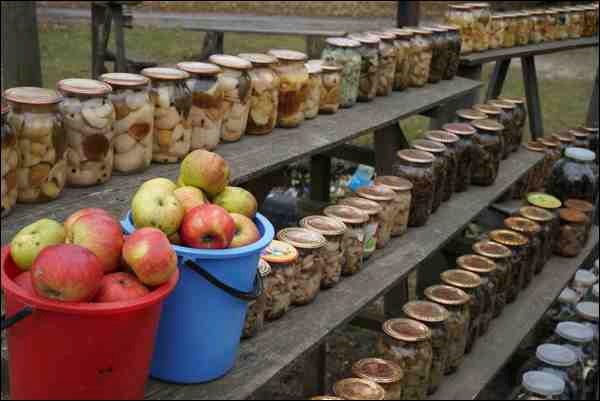Thousands of settlers arrived from western Ukraine to homestead on the prairies. Visiting that area for two weeks earlier this fall, I reflected on how similar the landscapes were. Was the view from our coach window an area south of Swift Current or in Ukraine?
Even after centuries of being tilled, the soil is still black and deep. Although deeply affected by the legacy of collectivization during the Soviet era, Ukraine remains the breadbasket of Europe. There are fields of wheat, sunflowers, maize, buckwheat, oats, pumpkins and sugar beets. Some of these are large and mechanized with John Deere implements. Others are small and for the most part hand-cultivated, some with the help of a horse.
We drove through small towns and villages with the houses fronting the road, each neatly fenced and often with a fancy gate. Most had a small orchard in front with a few apple and pear trees laden with fruit. We tasted our fair share. There were several varieties but they were all delicious! And the walnut trees! Newly fallen to the earth and cracked open, the fresh walnuts were delicious. Everyone should eat a fresh walnut before they die! The cherries had long been picked and dried or canned. Lush grape arbours were evident everywhere. Green and purple, large and sweet, they are a far cry of what we get in our grocery stores. They are eaten fresh or made into jelly and wine. One wonders how the Ukrainians must have hated collectivization with such a sense of pride and pleasure evident in yard, garden and harvest.
Each home boasted several acres of vegetable garden, many times with a small barn and pasture behind. Families often had a pig or one or two cows as well as chickens and geese. There were large pumpkin patches with hundreds of pumpkins still lying in the sun. So many pumpkins! And all as feed for the animals.
This was a bountiful year for apples. Along with potatoes and onions, they were evident on roadside stands along the highways and in markets. We passed more than a mile of large trucks full of apples lined up along the roadside, waiting their turn to be unloaded at a juicing facility. Not unlike grain trucks once seen at prairie elevators.
Wild forest mushrooms were also for sale at stands along the roadsides - a bountiful year according to everyone. We stopped. The temperature had fallen to -2 C over the past several days. The old ladies were in their babushkas, rubber boots and multiple layers of sweaters and coats. The mushrooms were available either canned in brine or dried. Some of our group wondered, did they really know the difference between the good ones and the poisonous ones? Were their canning procedures up to "our" public health standards? I took it for granted that, yes, they were, and that at some point Darwin's law would have kicked in. The babas indeed know what they were doing! And we had an opportunity to taste these wild mushrooms: they were incomparably delicious.
Although many of the less remote rural towns and villages now have piped water, individual wells with their decorative well covers were very much in view. And their exterior "summer kitchens", like those of our grandparents, is where the fruit and vegetables are canned, pickled, jellied, jammed and fermented into wine and liqueurs to be stored in a cold room or cellar for the winter.
Visiting in a village home, I was questioned in detail (through a translator) about what I grew in my own garden. I listed off the vegetables, row by row. And how did I keep them for the winter? I was okay until I came to the freezers - still a rarity in many of the more remote villages. My hat goes off to these Ukrainian women, their gardens and their skills.
- This column is provided courtesy of the Saskatchewan Perennial Society (www.saskperennial.ca; [email protected]).




